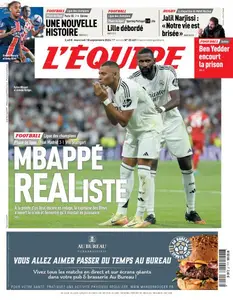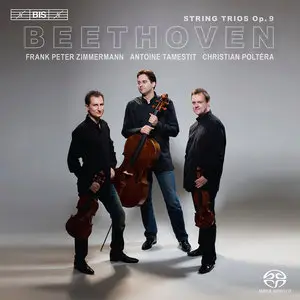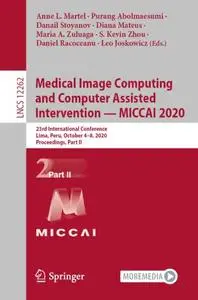| Su | Mo | Tu | We | Th | Fr | Sa |
|---|---|---|---|---|---|---|
| 1 | 2 | 3 | 4 | 5 | 6 | 7 |
| 8 | 9 | 10 | 11 | 12 | 13 | 14 |
| 15 | 16 | 17 | 18 | 19 | 20 | 21 |
| 22 | 23 | 24 | 25 | 26 | 27 | 28 |
| 29 | 30 | 1 | 2 | 3 | 4 | 5 |
Love S04E15
Date: 17 Sep 2024 23:58:13
1080p (FullHD) / WEBRip
IMDb
Rebellious Mickey and good-natured Gus navigate the thrills and agonies of modern relationships.
The Stone Poneys (Linda Ronstadt) - Albums Collection 1967-1968 (3CD) Japanese Remastered Reissue SHM-CD, 2016
Date: 17 Sep 2024 23:51:48
The Stone Poneys (Linda Ronstadt) - Albums Collection 1967-1968 (3CD)
Japanese Mini LP, Cardboard Sleeve, Remastered Reissue SHM-CD, 2016
EAC | FLAC | Image (Cue&Log) ~ 570 Mb | Mp3 (CBR320) ~ 268 Mb | Scans included
AM Pop, Folk-Rock, Folk Pop, Psychedelic | Time: 01:28:13
Japanese Mini LP, Cardboard Sleeve, Remastered Reissue SHM-CD, 2016
EAC | FLAC | Image (Cue&Log) ~ 570 Mb | Mp3 (CBR320) ~ 268 Mb | Scans included
AM Pop, Folk-Rock, Folk Pop, Psychedelic | Time: 01:28:13
Before becoming a solo act, Linda Ronstadt was the lead singer of the Stone Poneys, an L.A.-based trio with an acoustic folkish sound and strong original material. The band's focal point and greatest asset was Ronstadt's clear, powerful singing. Originally recording in a coffeehouse folk style not far removed from Peter, Paul and Mary, the group rocked up its sound slightly and scored a Top 20 hit with "Different Drum," written by Mike Nesmith of the Monkees, in 1967.
Madeline Bell - Bell's A Poppin' (1967) Reissue 2004
Date: 17 Sep 2024 23:50:33
Madeline Bell - Bell's A Poppin' (1967) Reissue 2004
XLD | FLAC | Image (Cue&Log) ~ 272 Mb | Mp3 (CBR320) ~ 125 Mb | Scans ~ 96 Mb
Pop-Soul, Soul | Label: RPM Records | # RPM 281 | Time: 00:53:37
XLD | FLAC | Image (Cue&Log) ~ 272 Mb | Mp3 (CBR320) ~ 125 Mb | Scans ~ 96 Mb
Pop-Soul, Soul | Label: RPM Records | # RPM 281 | Time: 00:53:37
Though born in New Jersey, smooth soul diva Madeline Bell enjoyed her greatest success in the United Kingdom (where she began living in 1963), and her first album, 1967's Bell's a Poppin', is a thoroughly enjoyable example of British pop record-making at its most poised and professional. Bell had a world-class voice and sang supper-club soul in the manner of Dionne Warwick and Dusty Springfield (the latter of whom was a friend of Bell's and often used her as a backing vocalist); those looking for Southern soul grit will be disappointed, but Bell's a Poppin' is a marvelous example of the British equivalent of Brill Building pop. The arrangements are clever and sophisticated, the musicians are spot-on throughout, producer John Franz adds just the right amount of polish without rubbing away the personality of the music, and Bell's vocals tell a story just beautifully, boasting smarts and understated passion while maintaining a firm sense of control and balance throughout.
Otona no Bouguya-san - 02
Date: 17 Sep 2024 23:49:20
Otona no Bouguya-san - 02
MKV | 848x480 | 日本語 | H264 @ 2000 kbps | AAC @ 128.0 kbps | 4 min 1 s | 65.1 MiB
Subtitles: English, Deutsch, Português, Español, Français, Italiano
MKV | 848x480 | 日本語 | H264 @ 2000 kbps | AAC @ 128.0 kbps | 4 min 1 s | 65.1 MiB
Subtitles: English, Deutsch, Português, Español, Français, Italiano
Trio Zimmermann - Ludwig van Beethoven: String Trios op. 9 (2011)
Date: 17 Sep 2024 23:48:46
Trio Zimmermann - Ludwig van Beethoven: String Trios op. 9 (2011)
Frank Peter Zimmermann, violin; Antoine Tamestit, viola; Christian Poltéra, cello
EAC | FLAC | Tracks (Cue&Log) ~ 330 Mb | Mp3 (CBR320) ~ 178 Mb | Scans included
Genre: Classical | Label: BIS | # BIS-SACD-1857 | Time: 01:13:51
Frank Peter Zimmermann, violin; Antoine Tamestit, viola; Christian Poltéra, cello
EAC | FLAC | Tracks (Cue&Log) ~ 330 Mb | Mp3 (CBR320) ~ 178 Mb | Scans included
Genre: Classical | Label: BIS | # BIS-SACD-1857 | Time: 01:13:51
Beethoven's trios for violin, viola, and cello remain among his least-played works. They seem to point back to the occasional chamber music of the Classical period, and if they're not given the proper attention, that's exactly what they do. But Beethoven himself thought enough even of the very early String Trio in E flat major, Op. 3 (1794), to supervise a keyboard arrangement of the work in the 1810s, and the Op. 9 set heard here, composed in 1798, is almost as ambitious as the group of Op. 18 string quartets that followed it by about a year, and for which it can be seen as a kind of study. The hard, weighty performances by the Trio Zimmermann command attention for these works. Hear the way it sculpts out the jagged opening melodic material of the climactic String Trio in C minor, Op. 9/3, or lay into the quasi-orchestral finale of the first trio of the set. There's a good deal of motivic work here that forecasts the density of Beethoven's mature chamber music language.
Image and Graphics Technologies and Applications (Repost)
Date: 17 Sep 2024 23:48:07
Image and Graphics Technologies and Applications: 13th Conference on Image and Graphics Technologies and Applications, IGTA 2018, Beijing, China, April 8–10, 2018, Revised Selected Papers by Yongtian Wang
English | PDF | 2018 | 674 Pages | ISBN : 9811317011 | 101.09 MB
This book constitutes the refereed proceedings of the 13th Chinese Conference on Image and Graphics Technologies and Applications, IGTA 2018, held in Beijing, China in April, 2018. The 64 papers presented were carefully reviewed and selected from 138 submissions. They provide a forum for sharing progresses in the areas of image processing technology; image analysis and understanding; computer vision and pattern recognition; big data mining, computer graphics and VR; as well as image technology applications.
Digital TV and Wireless Multimedia Communication (Repost)
Date: 17 Sep 2024 23:47:08
Digital TV and Wireless Multimedia Communication: 17th International Forum, IFTC 2020, Shanghai, China, December 2, 2020, Revised Selected Papers by Guangtao Zhai
English | PDF,EPUB | 2021 | 457 Pages | ISBN : 9811611939 | 213.8 MB
This book presents revised selected papers from the 17th International Forum on Digital TV and Wireless Multimedia Communication, IFTC 2020, held in Shanghai, China, in December 2020.
Medical Image Computing and Computer Assisted Intervention – MICCAI 2020 (Repost)
Date: 17 Sep 2024 23:45:41
Medical Image Computing and Computer Assisted Intervention – MICCAI 2020: 23rd International Conference, Lima, Peru, October 4–8, 2020, Proceedings, Part VI by Anne L. Martel
English | PDF | 2020 | 847 Pages | ISBN : 3030597245 | 165.55 MB
The seven-volume set LNCS 12261, 12262, 12263, 12264, 12265, 12266, and 12267 constitutes the refereed proceedings of the 23rd International Conference on Medical Image Computing and Computer-Assisted Intervention, MICCAI 2020, held in Lima, Peru, in October 2020. The conference was held virtually due to the COVID-19 pandemic.
Medical Image Computing and Computer Assisted Intervention – MICCAI 2020 (Repost)
Date: 17 Sep 2024 23:44:33
Medical Image Computing and Computer Assisted Intervention – MICCAI 2020: 23rd International Conference, Lima, Peru, October 4–8, 2020, Proceedings, Part II by Anne L. Martel
English | PDF | 2020 | 815 Pages | ISBN : 3030597121 | 153.7 MB
The seven-volume set LNCS 12261, 12262, 12263, 12264, 12265, 12266, and 12267 constitutes the refereed proceedings of the 23rd International Conference on Medical Image Computing and Computer-Assisted Intervention, MICCAI 2020, held in Lima, Peru, in October 2020. The conference was held virtually due to the COVID-19 pandemic.
The Alan Parsons Project - Stereotomy (1985) {1986, Japan 1st Press}
Date: 17 Sep 2024 23:44:21
The Alan Parsons Project - Stereotomy (1985) {1986, Japan 1st Press}
EAC Rip | FLAC (Img) + Cue + Log ~ 267 Mb | MP3 CBR320 ~ 106 Mb
Covers Included | 00:41:59 | RAR 5% Recovery
Progressive Rock, Art Rock | Arista / Nippon Phonogram Co. #32RD-50
EAC Rip | FLAC (Img) + Cue + Log ~ 267 Mb | MP3 CBR320 ~ 106 Mb
Covers Included | 00:41:59 | RAR 5% Recovery
Progressive Rock, Art Rock | Arista / Nippon Phonogram Co. #32RD-50
Stereotomy is the ninth studio album by The Alan Parsons Project, released in 1985. Although sometimes considered better musically than its predecessor, Vulture Culture, it was not as successful commercially, perhaps due to many fewer vocals from Eric Woolfson (he only appears on a small section of the title track). The album is structured differently from earlier Project albums, containing three lengthy tracks - ""Stereotomy" at well over seven minutes, "Light of the World" at well over six minutes, and the instrumental "Where's the Walrus?" running just over seven and a half minutes (making it the longest instrumental the Project ever made) and two minute-long songs at the end.
Computer Vision – ECCV 2020 Workshops (Repost)
Date: 17 Sep 2024 23:43:32
Computer Vision – ECCV 2020 Workshops: Glasgow, UK, August 23–28, 2020, Proceedings, Part II by Adrien Bartoli
English | PDF | 2020 | 780 Pages | ISBN : 3030660958 | 135.5 MB
The 5-volume set, comprising the LNCS books 12535 until 12540, constitutes the refereed proceedings of 28 out of the 45 workshops held at the 16th European Conference on Computer Vision, ECCV 2020. The conference was planned to take place in Glasgow, UK, during August 23-28, 2020, but changed to a virtual format due to the COVID-19 pandemic.
The 249 full papers, 18 short papers, and 21 further contributions included in the workshop proceedings were carefully reviewed and selected from a total of 467 submissions. The papers deal with diverse computer vision topics.
Proceedings of GeoShanghai 2018 International Conference: Geoenvironment and Geohazard (Repost)
Date: 17 Sep 2024 23:42:25
Proceedings of GeoShanghai 2018 International Conference: Geoenvironment and Geohazard By Arvin Farid
English | PDF | 2018 | 609 Pages | ISBN : 9811301271 | 107.1 MB
This book is the seventh volume of the proceedings of the 4th GeoShanghai International Conference that was held on May 27 - 30, 2018. This volume, entitled “Geoenvironment and Geohazards”, presents the recent advances and technology in geoenvironmental engineering and geohazards.
Key Digital Trends Shaping the Future of Information and Management Science (Repost)
Date: 17 Sep 2024 23:41:33
Key Digital Trends Shaping the Future of Information and Management Science: Proceedings of 5th International Conference on Information Systems and Management Science (ISMS) 2022 by Lalit Garg, Dilip Singh Sisodia, Nishtha Kesswani, Joseph G. Vella, Imene Brigui, Sanjay Misra, Deepak Singh
English | EPUB (True| | 2023 | 639 Pages | ISBN : 3031311523 | 100.2 MB
This book (proceedings of ISMS 2022) is intended to be used as a reference by students and researchers who collect scientific and technical contributions with respect to models, tools, technologies and applications in the field of information systems and management science. This textbook shows how to exploit information systems in a technology-rich management field. The book introduces concepts, principles, methods, and procedures that will be valuable to students and scholars in thinking about existing organization systems, proposing new systems, and working with management professionals in implementing new information systems.
















